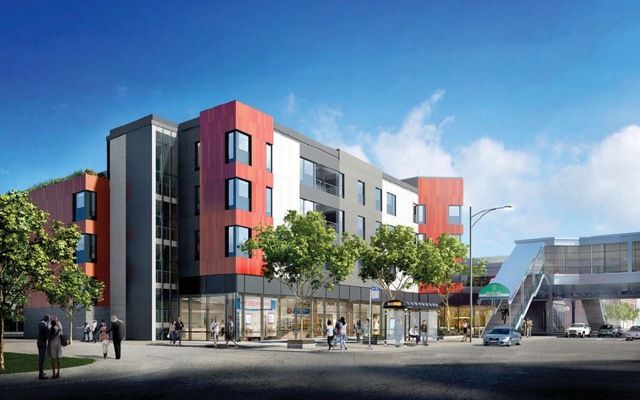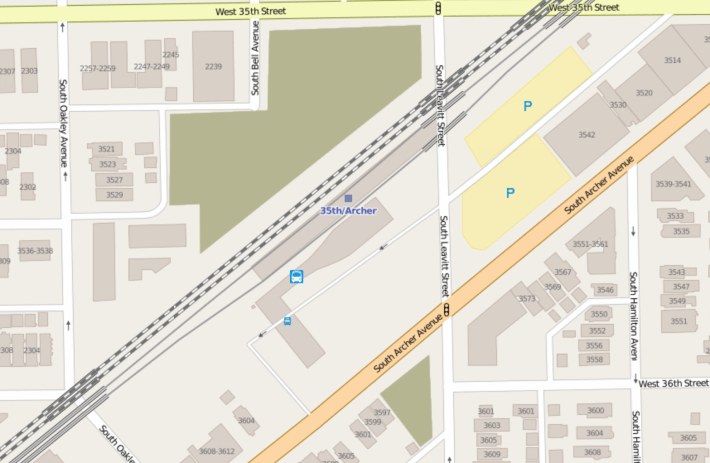
Earlier this year, transit-oriented development made the jump from being proposed and built only next to Chicago Transit Authority stations to also being proposed next to a Metra station. Now, the trend that has brought hundreds of new market-rate and affordable designated housing units to vacant lots near Chicago 'L' stations has jumped to the South Side. A two and a half-year-old ordinance is the cause for these new housing development patterns in the city.
Back in May, Curbed Chicago reported on a proposal from Preservation of Affordable Housing build 70 apartments in Woodlawn next to the CTA's Cottage Grove Green Line station. The building will have a mix of market-rate, moderate-income, and low-income units, as well as 15,000 square feet of commercial space.
It's part of the affordable housing developer's program, "Woodlawn Choice Initiative." The new building, called Woodlawn Station, would join a program that's renovating their other buildings, and a new squash facility at 6100 S. Cottage Grove Ave. that has after-school tutoring programs for students who live or attend school in the neighborhood.
While a city ordinance that preceded the TOD ordinance already reduced the minimum number of required car parking spaces at affordable housing developments, it doesn't apply to retail and commercial spaces. Additionally, the TOD ordinance goes even further than that one by eliminating the minimum requirement for residential and commercial uses because the building is so accessible by rail transit – the affordable housing parking minimum still requires some car parking. There are also two bus routes here.
Earlier this week Curbed Chicago reported on proposal for a vacant lot across the CTA's 35th/Archer station on the Orange Line, with information shared by the McKinleyPark.org website. Dan Mark, a developer, and owner of Mark Properties, presented at a community meeting last week his proposal to build 39 efficiency apartments – targeted to college students – with only three car parking spaces.

According to McKinleyPark.org, there was the usual gripe about competition for parking. Alder George Cardenas (12th Ward) countered that and "noted the trade-offs of higher density: Although it can cause congestion, it can also bring more disposable income to an area, making it more attractive to the consumer-focused chains and other businesses that McKinley Park currently lacks."
The zoning district must change before it can be built which will trigger a requirement to designate 10 percent of the units as affordable, for residents who earn less than 60 percent of the area median income.
The Orange Line corridor is especially ripe for mixed-use and denser development. Its construction in the early 1990s followed freight rail lines instead of existing residential areas. There are plenty more developable lots along the rapid transit line, some of which are highlighted on Metropolitan Planning Council's TOD calculator and map.



